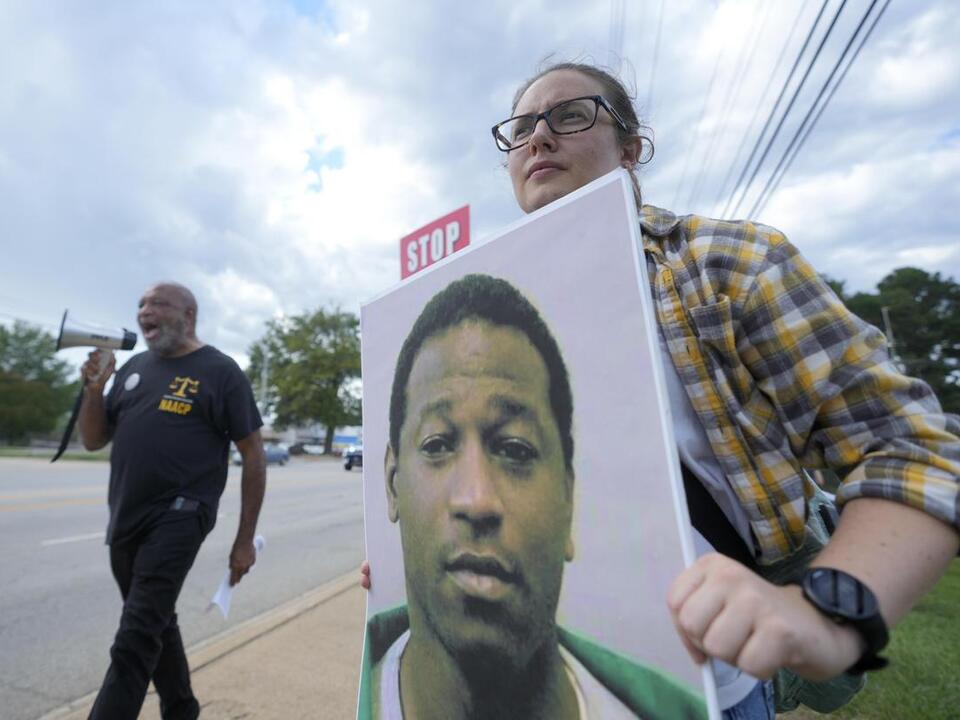Physical Address
304 North Cardinal St.
Dorchester Center, MA 02124
Physical Address
304 North Cardinal St.
Dorchester Center, MA 02124

On Friday, South Carolina executed inmate Freddie Owens, marking the state’s return to capital punishment after a 13-year hiatus due to the unavailability of lethal injection drugs.
Owens, who was 46 at the time of his execution, was convicted in the 1997 murder of Irene Graves, a cashier at a Greenville convenience store, during a robbery. His criminal record also includes the murder of a fellow inmate while awaiting trial, further complicating his legal situation.
He was pronounced dead at 6:55 p.m. in the Broad River Correctional Institution’s death chamber. Observers noted that when the curtain to the room opened, Owens was secured to a gurney, with his arms extended. He exchanged a brief glance with his lawyer before appearing to lose consciousness. After taking several deep breaths, his breathing gradually became more shallow, culminating in a final stillness.
Medical personnel arrived approximately 13 minutes later to officially declare him dead.
Throughout the day, Owens made several desperate attempts to halt his execution, including appeals to a federal court and a petition to the U.S. Supreme Court for a stay. However, both were denied. The Governor of South Carolina, Henry McMaster, also rejected Owens’ request for clemency after reviewing the case carefully.
McMaster had previously stated he would announce his decision just before the execution commenced, after being contacted by prison officials. While he acknowledged studying Owens’ clemency petition, he indicated a preference to respect the decisions previously made by juries and prosecutors.
In regards to the conviction, prosecutors highlighted that Owens shot Graves in the head after she informed him that she could not open the store safe. The circumstances of the murder underscored the brutal nature of his crimes.
Further complicating his case was the brutal killing of another inmate, Christopher Lee, which took place after Owens’ initial conviction but prior to sentencing for Graves’ murder. Owens confessed to committing the violent assault on Lee in detail, including stabbing and burning him. This confession was presented to multiple juries throughout Owens’ legal battles.
Desite being charged with Lee’s murder, prosecutors later opted to drop those charges, reserving the right to refile if necessary. This legal maneuvering came around the time Owens exhaustively pursued every regular avenue for appealing his sentence.
Owens’ execution may signify the beginning of a new chapter for South Carolina’s capital punishment system. With five other inmates currently with depleted avenues for appeal, the state has received clearance to execute a condemned inmate every five weeks.
Efforts to resume executions began when the state sought to introduce firing squads due to expiring supplies of lethal injection drugs. Amidst this, the South Carolina legislature passed a shield law designed to keep information about drug suppliers and execution protocols confidential, enabling the resumption of executions.
The state’s revised execution method now involves utilizing the sedative pentobarbital instead of a three-drug cocktail, aligning its procedures more closely with federal methods of execution.
Condemned inmates in South Carolina can choose from lethal injection, a firing squad, or the electric chair. Owens opted to allow his lawyer to decide his method of execution, citing religious convictions against suicide.
The last execution in South Carolina took place in May 2011. The state faced considerable delays for over a decade before capital punishment could be reinstated, which included legislative negotiations to incorporate the firing squad and related legal frameworks.
Since the death penalty was reinstated across the U.S. in 1976, South Carolina has executed a total of 43 inmates. Prior to the recent pause, the state averaged three executions each year, ranking it among the top states for capital punishment.
However, in the years leading to the recent execution, the death row population in South Carolina has substantially decreased. From a peak of 63 condemned inmates in early 2011, the number has fallen to 32. Many inmates have successfully appealed their sentences, while others have passed away due to natural causes.
In his final appeals, Owens’ defense team reiterated that prosecutors failed to provide conclusive scientific evidence linking him to the murder of Graves. They insisted the main testimony against him came from a co-defendant who had already pled guilty. A recent sworn statement introduced only days before the execution raised questions about his whereabouts at the time of the crime, suggesting he was not at the scene.
Moreover, Owens’ attorneys highlighted that he was only 19 when the crime was committed and had suffered significant trauma, including brain damage from violent experiences during his juvenile incarceration.
Source: source names



